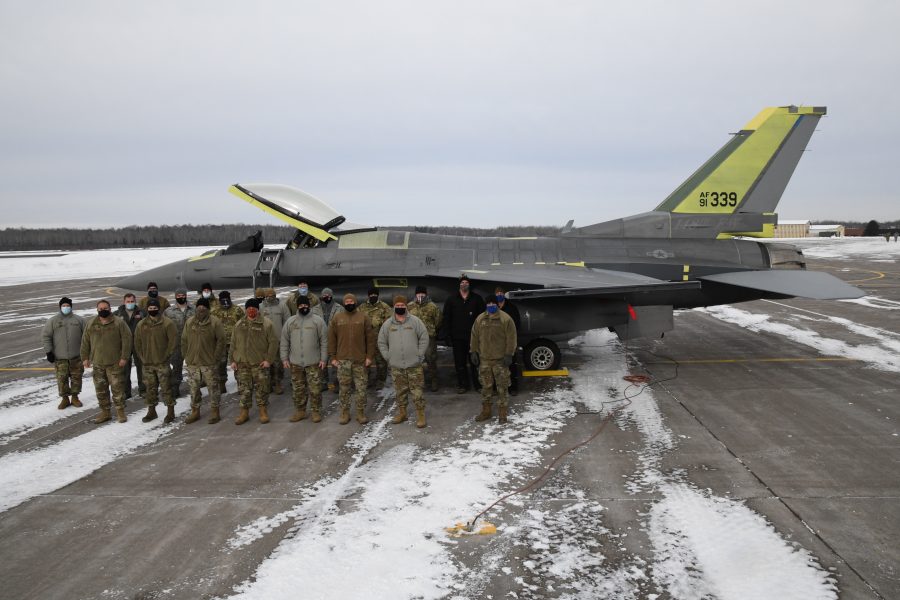The last of five F-16s damaged in a severe 2018 storm while deployed to Kuwait returned to service on Jan. 6 after years of work at the boneyard.
Twelve F-16 Block 50CMs and 333 personnel from the 148th Fighter Wing of the Minnesota Air National Guard were deployed to Ahmad al-Jaber Air Base, Kuwait, for Operation Inherent Resolve when a massive wind storm hit the base in May 2018. Gusts of up to 91 miles per hour collapsed sunshades onto seven F-16s on the base’s flightline, with five of the aircraft sustaining catastrophic damage, according to a wing release.
“The fabric ripping off the structures sounded like thunder,” said Maj. Will Carr, the 148th Aircraft Maintenance Squadron commander, who was driving outside when the storm hit, according to the release.
A fuel tank blew by their vehicle as the structures started to collapse. While most of the personnel were evacuated, explosive ordinance disposal Airmen came in to inspect aircraft munitions and declare the area safe.
The incident, which was not reported until January 2021, is allegedly the worst battle damage an Air Force or Air National Guard unit received since 1991, according to the release.
“It looked like a bomb went off,” Chief Master Sgt. Ryan Gigliotti, equipment maintenance flight chief, said in the release. He added, “There were centerline tanks and equipment strewn across the ramp from the winds.”
The day after, civil engineers with the 407th Air Expeditionary Group assessed the damage and began to plan the next steps. A crash recovery team came together to remove the sunshades from the aircraft, which took about a week, the release states.

Maintainers worked on aircraft that were not severely damaged, which quickly returned to service. All told, this included 3,473 man hours, with work including a wing change and two tail swaps.
“We quickly prioritized our efforts to get our fully mission capable jets ready, fix the least damaged jets first, then disassemble and ship the non-repairable jets,” Gigliotti said in the release.
Lt. Col. R. Matt Russell, the chief of F-16 Flight Test and pilot for the F-16 System Program Office, deployed to the base to test the aircraft before they returned to operations.
“It’s pretty remarkable to get two jets flying that could have been shipped home in a box,” Russell said in the release. “As a result, they were able to add sorties to their air tasking order in combat.”
These damaged F-16s returned to service, flying 18 more sorties before the deployment ended. During the deployment, the squadron flew 682 combat sorties, including 61 intercepts of Russian, Iranian, and Syrian aircraft along with a maritime escort of a carrier group. In total, the unit flew 3,899 hours, the release states.
The three most heavily damaged F-16s were listed as destroyed, and palletized to be taken to the 309th Aerospace Maintenance and Regeneration Group, also known as the “boneyard,” at Davis-Monthan Air Force Base, Ariz., the release states. There, workers conducted sheet metal repairs and replacements, along with other extensive work. The first aircraft returned to the wing in October 2019, the second in January 2020, and the third, tail number 91-339, on Jan. 6, 2021.
“It feels good to have closure with 339 on the ramp,” 148th Maintenance Group Commander Col. Robert Troy said in the release. “I think it’s even more meaningful for the men and women who put the work into taking the aircraft apart, putting it into a crate to ship home. Many, I doubt, expected to see it fly again. After 960 days, I feel like our fleet is whole again.”
